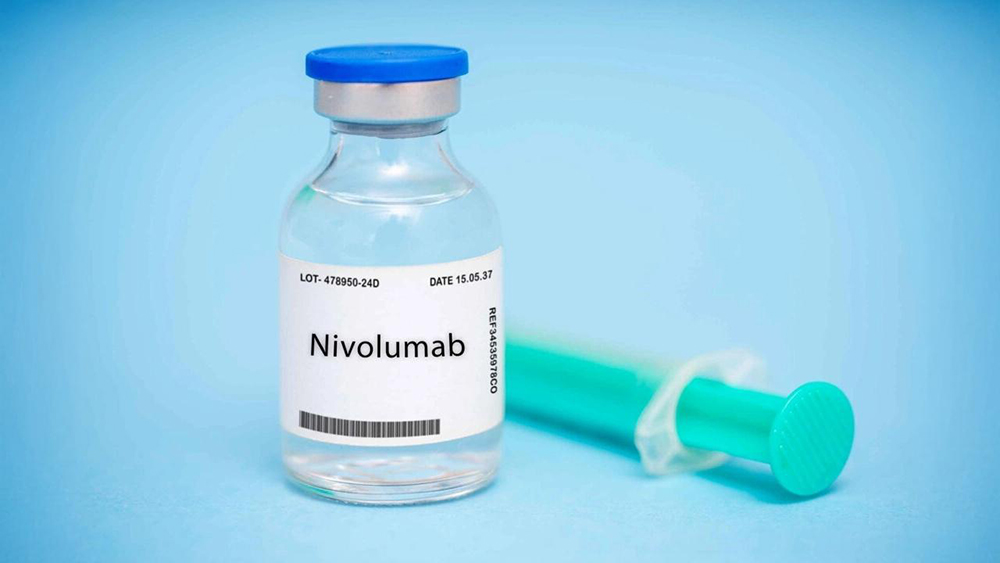|
Getting your Trinity Audio player ready...
|
The treatment also showed a reduction in long-term side effects.
By: George Citroner
In a new clinical trial that could affect Hodgkin lymphoma (HL) treatments, researchers have reported a 92 percent survival rate among advanced-stage patients receiving a new immunotherapy regimen, potentially eliminating the need for radiation therapy and reducing long-term side effects commonly associated with traditional treatments.
This development marks a significant advancement in the fight against a type of cancer that predominantly affects younger people and those over 65.
Study Overview and Participant Diversity
Published in the New England Journal of Medicine on Wednesday, the trial indicates a potential shift in standard care for this rare but often deadly form of blood cancer.
Researchers enrolled nearly 1,000 patients from various cancer clinics and academic institutions across the United States and Canada. A key aspect of the trial was its inclusiveness: One-third of the participants were pediatric patients aged 12 and older, with 10 percent over 60. A quarter of the participants came from underrepresented demographics, addressing ongoing disparities in cancer treatment access and outcomes.
Participants were split into two groups: one received the standard treatment of chemotherapy with brentuximab vedotin, a drug that uses an antibody to deliver cancer-fighting medicine. The other group got the same treatment but also took nivolumab, a type of immunotherapy that helps the immune system target genetic changes linked to Hodgkin lymphoma.
In a deviation from conventional treatment methods, the trial intentionally excluded radiation therapy, typically a standard procedure for younger HL patients. This decision aimed to minimize the long-term adverse effects associated with radiation, including the risk of secondary cancers. Early findings highlighted that those receiving immunotherapy experienced significantly fewer side effects and adverse events than those receiving traditional methods.
After a two-year follow-up, results demonstrated that 92 percent of participants in the immunotherapy group not only survived but also showed no progression of their disease. This surpassed the standard care group’s survival rate of 83 percent.
Promise of New Treatment
Between 20 percent and 25 percent of HL patients still face challenges in achieving a cure, necessitating “significant toxic therapy,” Dr. Jonathan Friedberg, director of the Wilmot Cancer Institute at the University of Rochester Medical Center and lead investigator of the phase 3 clinical trial, told The Epoch Times.
“In addition, because these are younger patients, they frequently have 50 or more years of life remaining after treatment, and what we’ve learned is that some of our successful treatments in the past have caused significant late side effects,” he said.
With this new treatment, scientists believe they have found a way to reduce the long-term side effects of therapy—including secondary cancers later in life and heart and lung conditions, according to Friedberg. Patients receiving radiation face the highest risk of secondary cancers. Young women undergoing chest radiation, especially, are at a higher risk of secondary breast cancer, he noted.
“With the ability of this regimen to largely eliminate the need for radiation therapy, we’re certainly optimistic that some of those risks and concerns will go away,” Friedberg said.
However, immunotherapy is not devoid of risks or side effects.
Immunotherapy can lead to side effects stemming from immune system activation, which may range from mild issues, such as skin reactions and flu-like symptoms, to more severe conditions involving organ inflammation, Dr. Shaheer Khan, a medical oncologist at Northwell Health Cancer Institute, told The Epoch Times. These can include inflammation of organs such as the colon, lungs, liver, and heart, he added.
Young at Greatest Risk
Hodgkin lymphoma is particularly prevalent among younger individuals, such as those in their 20s. Hodgkin lymphoma can affect people of all ages, but it most often strikes either young adults or older adults. The average age for diagnosis is around 39, according to the American Cancer Society.
“The median age of patients diagnosed with Hodgkin lymphoma may be around 30, meaning half the patients are younger than that,” Friedberg said.
Traditional treatment methods have involved rigorous chemotherapy followed by radiation, resulting in effective cures for roughly 80 percent of patients. The typical chemotherapy regimen used is known as ABVD, which stands for:
A: adriamycin (doxorubicin hydrochloride)
B: bleomycin sulfate
V: vinblastine sulfate
D: dacarbazine (DTIC)
However, the remaining 20 percent face a challenging path, often grappling with long-term health issues, including secondary cancers and heart or lung complications.
Friedberg highlighted the trial’s promising results. “We will see many less breast cancers 20 to 30 years later in this group of patients, less infertility, less heart disease,” he said in a press release.
Jenna Cottrell, a sports reporter from Rochester, New York, shared with The Epoch Times her experience of being diagnosed with HL in her 20s and undergoing ABVD chemotherapy.
“I’ve been in remission since 2017, but the physical toll that it did take on my body, both, you know, mentally and also emotionally, was something that, you know, it’s a challenging journey,” she said. “I was just 25, but I learned a lot about myself through that journey, and to hear that other patients will have a lightened load, hopefully, is really awesome to hear.”
Accelerated FDA Review Process
The robust preliminary data from the trial led the National Cancer Institute to halt the study early to expedite the review process by the U.S. Food and Drug Administration (FDA).
In 2023, the American Society of Clinical Oncology showcased these findings, which included initial one-year follow-up data. The latest results confirmed the earlier findings and the research team anticipates further advancements in HL treatment as a result of this immunotherapy trial.
“One of the things we’re looking forward to as far as the next step is some of the correlative studies from this. We’ve drawn blood samples in patients over the course of treatment, and we’re hopeful that those blood samples may allow us to do a couple of things,” Friedberg said.
He hopes future studies will develop assays that could predict which patients might not respond to immunotherapy, enabling earlier interventions.
“We anticipate that the next study in this area will leverage some of those blood tests in order to make more of a precision approach for the treatment of Hodgkin lymphoma,” Friedberg added.




